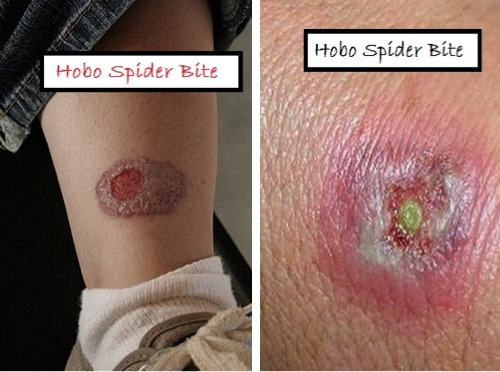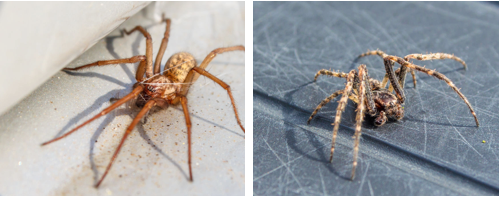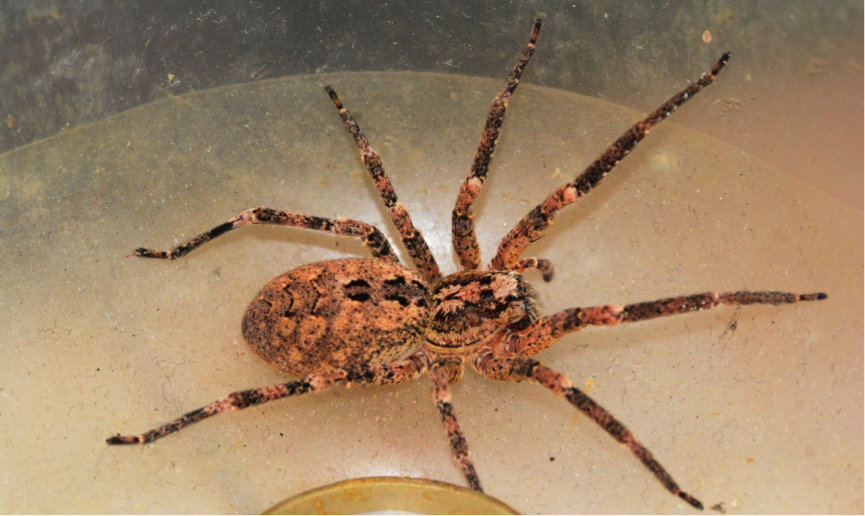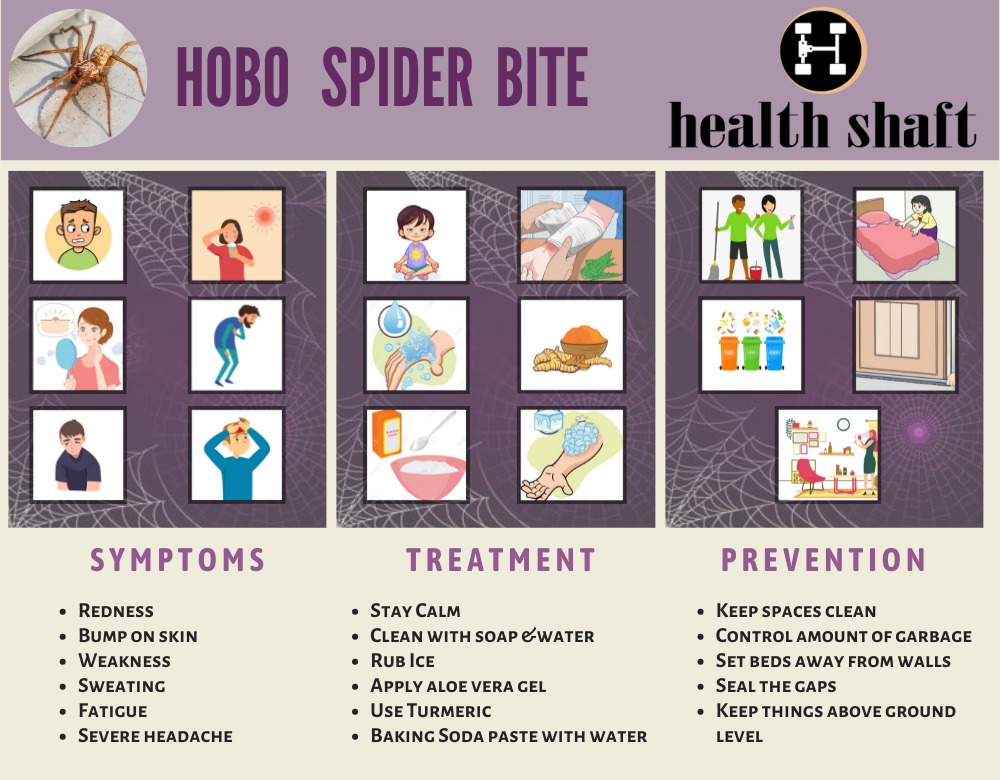The hobo spider got its name from the fact that it is thought to have spread its range by hitching rides on people along major roads in the Pacific Northwest.
The hobo spiders are sometimes named aggressive spiders, although this is a misnomer. The spider does not reside in the house in its domestic habitat. It’s also not hostile unless it’s grabbing prey or caught against someone’s skin. Only in these circumstances will a hobo spider bite. It’s crucial to keep in mind that spiders prefer to flee rather than bite.
When they feel threatened, the hobo spider bites. This spider is commonly mistaken for other spider species, particularly the brown recluse spider.
Hobo spiders weave webs in and around human habitations on occasion. The eggs of the hobo spider are laid in fall and hatch in late April. After mating male hobo spider dies.
Hobo Spiders are most commonly found:
- in cupboards
- behind furnishings
- under floorboards
Table of Contents
Hobo Spider Bites
Most of spider bites are rarely dangerous but hobo spider bites are extremely serious as black widow and brown recluse.
A hobo spider bite may go unnoticed at first, but within 15 minutes it will produce pain and paralysis.
The area will begin to change the color and turn red after 1 hour. After 8 hours, the bite of a hobo spider will harden and expand. The wound may release fluids and finally become black after 24 to 26 hours.
Hobo Spider Bites causes trouble in breathing, severe headache problems, pain in muscle that may need instant medical care.

Pictures of a hobo spider
It would be hard to trace hobo spiders and hence the pictures of a hobo spider may help you to recognize hobo spiders.
A hobo spider’s body length is around 1/4 to 1/2 inch, and its leg spread is about 1-2 inches as you can look below in the picture of a hobo spider.

According to the pictures of Hobo Spider they have a light to medium brown back with dark stripes, solid light brown legs without bands, and rectangular abdominal spinnerets visible from above.

Three crucial traits should be noticed under a microscope to accurately identify a hobo spider.
When recognizing a hobo spider, have a look for the following feature:
- Cheliceral retro margin with 6 to 8 teeth.
- Plumose setae.
- 8 eyes in two almost straight rows.
As you can see below in the picture of a hobo spider they have chevron (V-shaped) patterns run through the centre of the abdomen, with the chevrons pointing towards the head (potentially several).

Hobo Spider Poisonous
Although spider bites are infrequent, they may be painful and hazardous. In the United States, however, only a few spider species cause harm to humans. They are Brown recluse, Black widow spider, Hobo Spider. Hence hobo spider are poisonous.
People used to believe that hobo spider bites and hobo spider venom were harmful. The toxicity of the hobo spider bites has been a source of controversy among scientists, but a recent study reveals the hobo spider’s venom may be less hazardous than many people believe.
It’s also been reported that hobo spider venom is only transferred in around half of all hobo spider bites, rendering more than half of them harmless.
The intensity of the spider bite symptoms is determined by the type of spider, the quantity of venom injected, and your body’s sensitivity to the spider bite venom.
The hobo spider venom that is injected by the hobo spider causes severe symptoms.
Hobo Spider Bite Symptoms
Commonly, spider bites look similar to bug bites like a bright red inflamed, painful bump on the skin, and many times spider bites are not noticeable.
Non-poisonous spider bites generally don’t show other symptoms.
Spider bites from some other species of spider such as the hobo spider may cause major indications and symptoms.
Here are some hobo spider bite symptoms mentioned below:
When hobo spider bites the person had discomfort, redness, and leg jerking for 12 hours.
- Visual or aural disturbance
- Red or purple rash at the puncture location
- Weakness
- Joint discomfit
- Severe headache
- Nausea
- Sweating
- Memory Problem
- Fatigue
Hobo spider bite wounds take a long time to heal.
Some of the hobo spider bites can cause allergic reactions to some humans. If you face any severe symptoms, it could be a mark of an allergic reaction. The person should consult a doctor if they begin hives, swelling, and difficulty in breathing.
Hobo Spider Bite Stages
The previous sections have covered the majority of the symptoms that can occur after a hobo spider bite, and these symptoms can occur at different times and not immediately after the spider bites.
5 stages that may be encountered after a hobo spider bite are:
Stage: 1
When a hobo spider bites you, it feels like a tiny speck. If you see the location of specific sting redness during this stage, you can also detect it. Swollen bites or an area that looks like an insect bite have also been described.
Stage: 2
After some time has passed after the hobo spider bite, the wound may swell up and resemble a bee sting. It’s possible that a blister development may be seen.
Stage: 3
The skin tissue will eventually become a little tougher, and a transparent blister packed with fluid will appear on the site where the hobo spider bites you.
Stage: 4
If you’ve waited long enough for the blister to grow and break on its own, it will eventually allow the fluid inside it to leak out at this time. The place will now have an open sore, which may be aggravating because even fresh air may cause some pain.
Stage: 5
If there are any decaying cells, Perish the thought, the hole will take significantly longer to cure.
The growth of a scab on the lesion is part of the healing process, and the wound should be left alone during this time to allow the process to proceed at its own speed.
Note that necrosis can occur if the person’s immunity is not very strong.
Finally, the scab and wound will go away, and you may be left with a scar to remind you of your spider encounter.
Hobo Spider Bite Treatment
There are no special treatments for hobo spider bites. Although following tips would help you to deal hobo spider bites that may be poisonous:
- Don’t panic and stay calm.
- Clean the area where hobo spider has bitten with mild soap and water.
- Apply damp cloth to reduce swelling and pain.
- If possible, raise the hobo spider bite area.
Some natural treatments for hobo spider bite:
- Rub ice on infected area for good relief.
- For soothing effect, use aloevera gel on the hobo spider bite.
- To reduce swelling and pain use turmeric .It is natural anti-inflammatory.
- Baking soda paste mixed with water is quite helpful in treating spider bites because its basic composition helps to neutralize the spiders’ acidic poison.
- To reduce the effect of itching uses peppermint oil.
The therapy is identical to that for hobo spider bites from brown recluse spiders. It might require corticosteroids, antibiotics, surgery.
Hobo Spider Bite treatment is most effective if given within 24 hours following the spider bite.
Hobo Spider Bite Prevention
- Control the amount of garbage and wood heaps around your residence, since they make excellent hiding places for spiders.
- Look for webs and spiders in your farming gear.
- When dealing with packed boxes and firewood, wear a long-sleeved jacket, cap, long trousers folded into socks, gloves, and boots.
- Clean up lofts, basements, crawl spaces, garages, and sheds in the same way.
- Set beds away from the walls and only allow the legs of the sleepers to contact the floor. Allow plenty of room underneath beds and don’t let sheets touch the floor.
People may do the following to keep hobo spiders out of their homes:
- Keep all spaces – even garages and basements – clean and clutter-free.
- Sealing every gap around the house.
- Shoe and other goods should be kept above ground level.
- When relocating items that have been sitting for a long time, proceed with caution.
FAQ
Will a hobo spider bite heal on its own?
The venom of the hobo spider can produce numbness and muscle or joint problems within an hour after the hobo spider bite. A black scab peels off after approximately three days, leaving an open, slow-healing lesion.
How long after a spider bite do symptoms occur?
Within 4 to 8 hours, blisters emerge. Over the course of 2 to 3 days, the center turns blue and depressed (crater-like). In 10% of instances, skin deterioration may necessitate skin transplantation.
If you’ve been bitten by a spider, it might take half an hour to 2 hours or longer to feel any consequences, so pay attention to signs if you know you’ve been bitten.
Do hobo spiders have venom?
As per the studies, hobo spider bites contains venom but hobo spider venoms are not hazardous.
Hobo spider bites are one of 3 poisonous spider bites found in the United States, along with black widow’s spider bite and brown recluse spider bite that can be hazardous, according to the Centers for Disease Control and Prevention.
The hobo spider venom, unlike those of other spiders known to cause this illness, is not hazardous to humans, according to the Centers for Disease Control and Prevention. This is substantiated by trials in which hobo spider venom was administered into animals and no skin responses were seen.
When should you be worried about a spider bite?
You should be worried about a spider bite:
- If you are aware that you have been bitten by a deadly spider.
- If you are hypersensitive to spider venom or have had a severe response to it.
- If your bite has become more severe.
If you develop symptoms other than the bite, including severe stomach discomfort, cramping, vomiting, or difficulty breathing, get medical attention straight once.
If you have an open sore or a bulls-eye mark, or if the bite grows worse beyond 24 hours, you should consult a doctor. Keep an eye out for things like increasing discomfort surrounding the bite, spreading redness, and fluid flowing from the bite.
Conclusion
Spiders have a terrible reputation, yet they do a good deed by lowering the number of insects on the earth that may harm crops and land. Spiders have no desire to bite you. When spiders are confined or feel the need to protect themselves, they bite. The majority of spider bites are completely harmless except brown recluse spider bite, black widow spider bite, hobo spider bite, tarantula spider bite, and Brazilian wandering spider bite.
The prognosis for hobo spider bites is promising. According to current research, the hobo spider venom is not harmful to humans. Skin responses are minor and transient. If you have any concerns about a skin response, consult a physician for a complete diagnosis.

